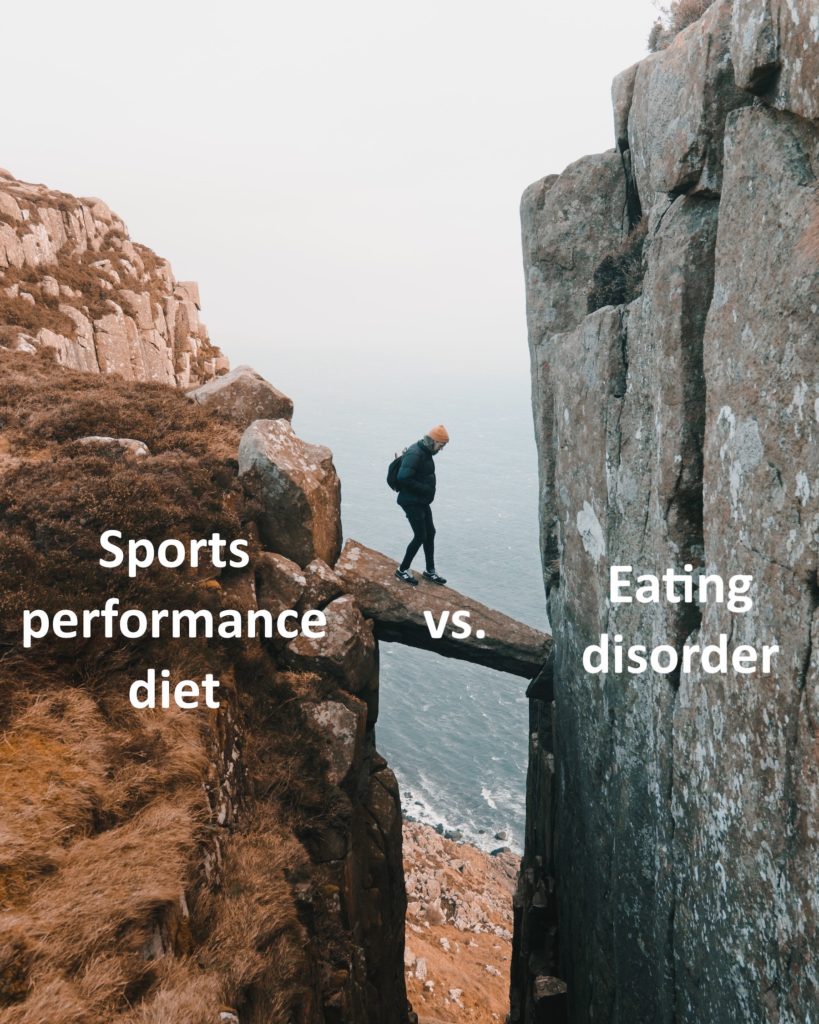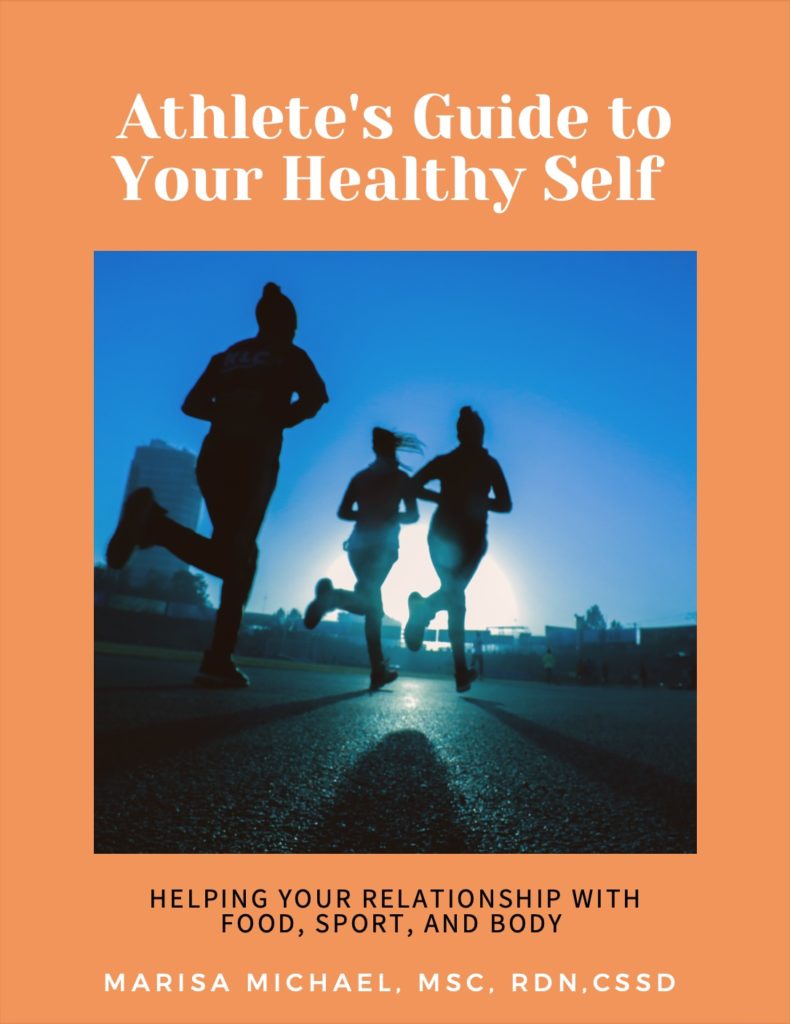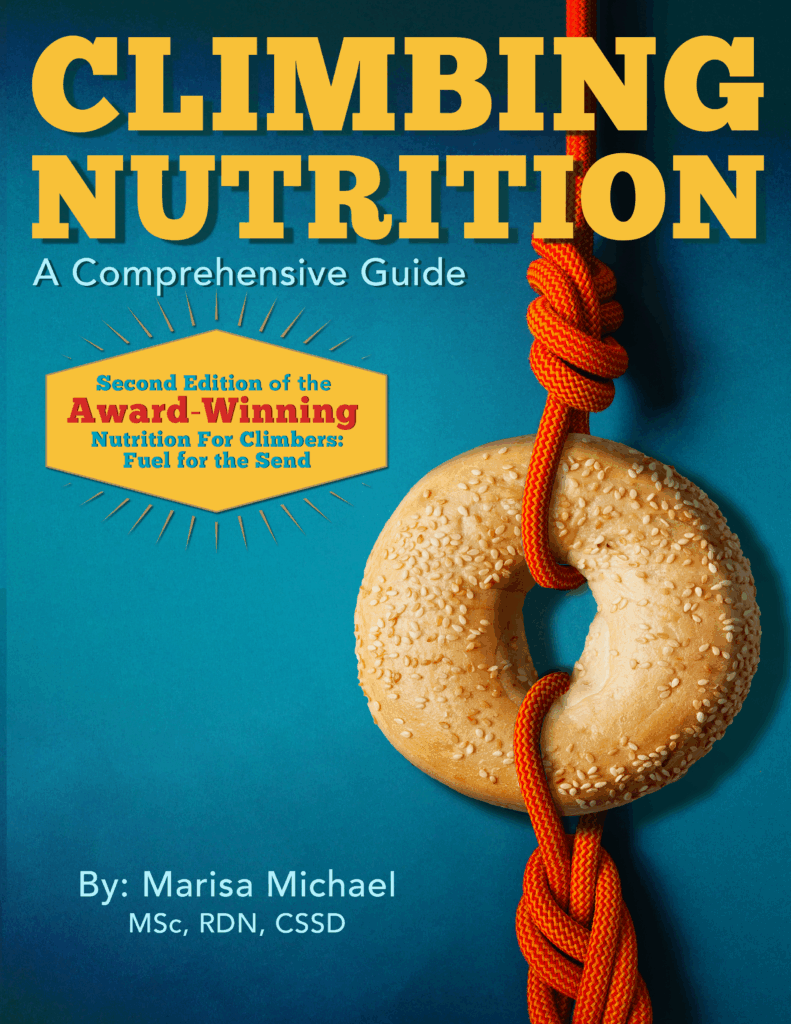
I get this question a lot. When talking about disordered eating, we usually talk about adhering to strict diet rules, being rigid in your food intake, measuring food, counting calories, and generally just being overly fussy about what you eat.
These types of behaviors actually match up really closely with what some athletes need to do in order to excel at their sport. The high strength-to-weight ratio needed for successful climbing sometimes tempts people to cross that line between “I’m eating a good diet for my sport” vs. “I have disordered eating patterns.”
There are some key differences. If you are truly eating to get better at climbing, you will not only eat enough calories, but you will have health at the forefront of your mind.
Disordered eating is different. Not only are calories usually restricted, but health is sacrificed in the name of weight, body image, or following what the eating disorder is telling you to do.
Intent, emotions, and mental state are also really important. If your intent is to follow what those loud eating disorder thoughts are telling you to do, you aren’t eating to get better at climbing. You’re eating a certain way because you have an eating disorder.
If your eating is accompanied by guilt, shame, secrecy, or fear it is disordered eating, not eating for sports performance.
Here’s a chart that will help you to know the difference.
| Healthy relationship with food: seeking athletic excellence through nutrition | Unhealthy relationship with food/disordered eating patterns |
| Use food as fuel | Anxious about how much, when, and what to eat |
| Food can be for enjoyment and pleasure | Use food to cope with emotions |
| Flexibility in food choice | Rigidity in food choices |
| Paying attention to hunger and fulness cues—eat when hungry, stop when full. Internal cues guide food intake | External cues guide food intake: the time, the diet rules, the coach or parent, the perceived correct portion size, etc. |
| Variety of food choices | Restriction in food choices |
| Satisfaction with food choices and amount eaten | Guilt, shame, or regret with food choices |
Dr. Kate Bennet, a sports psychologist at Live Train Thrive has created a graphic that represents this same concept but with exercise. (My chart above was based off of Dr. Bennett’s graphic).

If you feel you need help with overcoming an eating disorder or compulsive exercise, or just simply are looking for coaching for fueling right for climbing, visit realnutritionllc.com to learn more and set up an appointment with the dietitian.
~This is general information only and not medical advice. Always consult with your healthcare provider before undergoing any diet or lifestyle change.



